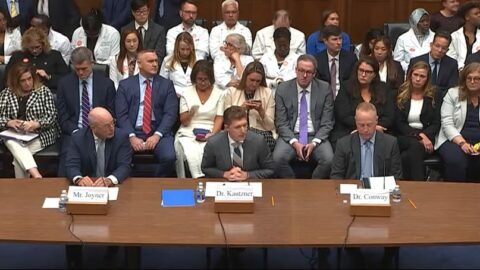There may be no drug-pricing myth more pernicious than the idea that the NIH does all the drug research, and companies just sweep in at the eleventh hour, ram medicines through the FDA, and profit handsomely.
Because while the NIH does do a lot of important work, they’re really not engaged in either the truly high-risk R&D or the truly expensive R&D. But quantifying that is tricky, which is why this new Vital Transformation report is helpful. VT looked at nearly 400 drugs approved between 2011 and 2020 to see how many of them have patents that referenced government work.
The answer: very, very few. Only about 8% of controlling patents had a “government interest statement” or similar acknowledgment. And an even smaller number — like 1% — had such a reference in all of the legally controlling patents.
There are a couple of implications here. The practical one is that — Bernie Sanders’ obsessions notwithstanding — there might not be a lot of patent estate out there for the government to seize via march-in rights. The broader conclusion is that this documents well the gulf between what people think the NIH does in terms of drug development and what it actually does.
Because the findings here have been pretty consistent. Despite the VT analysis being industry-funded (BIO, NPC, and a bunch of pharma companies supported the work), it’s not out of line with a lot of other studies.
Even the folks at Harvard PORTAL — no cheerleaders for industry — have done work that showed that only 17 of the 248 (or about 7%) medicines they looked at had any evidence of direct government funding. To be fair, that paper was designed to look more broadly at links between new drugs at “publicly sponsored research contribution,” including work from universities, with boosted their numbers. But the general conclusion holds: NIH’s fingerprints are on relatively f new medicines.
To be sure: this is a tricky research question. Looking at patents gives one way of examining the issue (though one with implications for things such as march-in rights), but looking at NIH involvement more holistically, by, say, analyzing the millions of scientific papers on new medicines shows that NIH does indeed provide foundational work that contributes to drug development. But that’s a fundamentally different claim than the one that is usually proffered.
Joe Biden is apparently going to go all-in on drug-price policy as he prepares for the 2024 election. CNN said he’ll announce some new drug-pricing provisions this week, and they hint that there may be some insulin bits and an effort to expand the IRA beyond the Medicare effort. While there’s zero chance anything he floats will lead to serious policymaking in the short term, these kinds of campaign promises have a way of shifting the Overton Window in ways that will shape long-term changes.
Here’s more coverage of the way that the Inflation Reduction Act is driving Medicare premiums higher. This isn’t the first mention of this idea — KFF had some nice work last month — but I would expect that it won’t be the last, either. The idea that the IRA will move premiums up feels like it’s going to be ripe for a lot of mainstream media attention … the hurdle will be making the underlying mechanics understandable.
I don’t think there’s much new or insightful in this Real Clear piece by Survivors for Solutions’ John Czwartacki, who spoke at at least nine of the 10 CMS listening sessions, delivering nearly the same speech each time, regardless of the medicine being discussed. But I found it interesting that CMS told him to knock it off with the carbon-copy presentations: “My message was nearly identical in all hearings, despite being warned mid-week in emails from CMS that I should reconsider my statements. I’m sorry, but when the house is on fire, people need to be told. Repeat and repeat until the message is received.”
Last week, I flagged an impassioned Twitter post by Peter Kolchinsky on a NYT piece about hep C in Egypt. Only I didn’t include the right link. Peter has expanded his thoughts on the Rapport site, so if you want to see what I didn’t show you last week, here it is.
Howard Dean is banging the drum about 340B, pointing a finger at hospitals. But his Real Clear op-ed doesn’t have a lot of specifics on solutions.
It’s not drug pricing, but this research about how post-operative costs vary by the sex of the surgeon caught my eye.
If this email was forwarded to you, and you’d like to become a reader, click here to see back issues of Cost Curve and subscribe to the newsletter.





